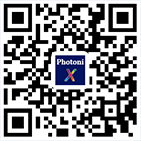摘要:
Solar-driven interfacial water purification (SDIWP) has emerged as a green, cost-effective, and sustainable technology for waste/sea water treatment. However, at present, innovative smart water treatment systems that enable high-efficiency water purification through multiform solar schemes are rare. Herein, we report a light-propelled photocatalytic evaporator based on semi-metallic reduced graphene oxide (RGO)/ titanium carbide MXene-titanium dioxide (Ti3C2Tx-TiO2) ternary hybrid foams for multi-scheme SDIWP. The RGO/Ti3C2Tx-TiO2 foam is prepared by freeze-drying induced self-assembly (FDISA) of Ti3C2Tx and graphene oxide (GO) nanosheets by which an in-situ redox reaction between Ti3C2Tx and GO nanosheets occurs and TiO2 nanoparticles are generated simultaneously. The synergistic effect leads to the formation of the semi-metallic RGO/Ti3C2Tx-TiO2 framework with the Ti-O-C covalent bonding between RGO and Ti3C2Tx. Under light irradiation, the photogenerated carriers in RGO/Ti3C2Tx-TiO2 can occupy the quantum-confined graphene-like states in RGO with an average lifetime of 0.8 ps, this value is 2 orders of magnitude shorter than that of GO and Ti3C2Tx. As a result, the RGO/Ti3C2Tx-TiO2 foam shows photocatalytic degradation activity and photothermal conversion ability, enabling multi-scheme SDIWP. Owing to its excellent photothermal properties and quantum-confined superfluidic structures, the RGO/ Ti3C2Tx-TiO2 foam exhibits superior vapor generation performance (1.72 kg m-2 h-1). Furthermore, the photocatalytic evaporator can be remotely manipulated as a floating robot for water treatment through programmable light navigation via photothermal Marangoni propulsion. This work provides a new approach for developing robotic SDIWP systems.
Abstract:
Solar-driven interfacial water purification (SDIWP) has emerged as a green, cost-effective, and sustainable technology for waste/sea water treatment. However, at present, innovative smart water treatment systems that enable high-efficiency water purification through multiform solar schemes are rare. Herein, we report a light-propelled photocatalytic evaporator based on semi-metallic reduced graphene oxide (RGO)/ titanium carbide MXene-titanium dioxide (Ti3C2Tx-TiO2) ternary hybrid foams for multi-scheme SDIWP. The RGO/Ti3C2Tx-TiO2 foam is prepared by freeze-drying induced self-assembly (FDISA) of Ti3C2Tx and graphene oxide (GO) nanosheets by which an in-situ redox reaction between Ti3C2Tx and GO nanosheets occurs and TiO2 nanoparticles are generated simultaneously. The synergistic effect leads to the formation of the semi-metallic RGO/Ti3C2Tx-TiO2 framework with the Ti-O-C covalent bonding between RGO and Ti3C2Tx. Under light irradiation, the photogenerated carriers in RGO/Ti3C2Tx-TiO2 can occupy the quantum-confined graphene-like states in RGO with an average lifetime of 0.8 ps, this value is 2 orders of magnitude shorter than that of GO and Ti3C2Tx. As a result, the RGO/Ti3C2Tx-TiO2 foam shows photocatalytic degradation activity and photothermal conversion ability, enabling multi-scheme SDIWP. Owing to its excellent photothermal properties and quantum-confined superfluidic structures, the RGO/ Ti3C2Tx-TiO2 foam exhibits superior vapor generation performance (1.72 kg m-2 h-1). Furthermore, the photocatalytic evaporator can be remotely manipulated as a floating robot for water treatment through programmable light navigation via photothermal Marangoni propulsion. This work provides a new approach for developing robotic SDIWP systems.









 下载:
下载:



